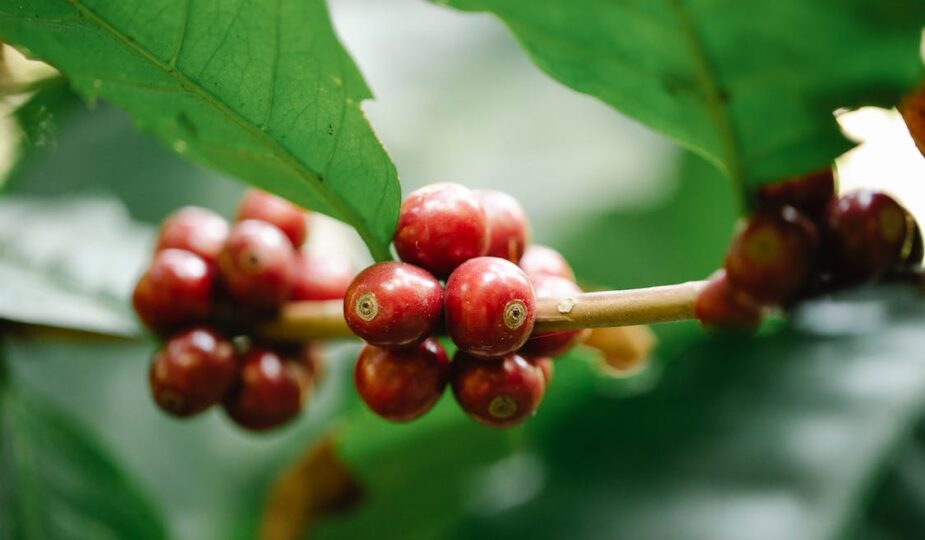
What Is a Coffee Cherry? The Birth of Coffee
Are you a coffee enthusiast who craves the rich and robust flavors of your favorite brew? Have you ever wondered about the origins of this magical beverage that jumpstarts your day and keeps you going? Well, my fellow coffee lovers, today we are going to dive into the fascinating journey of a coffee bean from its humble beginnings as a coffee cherry. Get ready to be amazed as we explore the birth of coffee!
Table of Contents
- The Journey of a Coffee Cherry
- Frequently Asked Questions about Coffee Cherries
- 1. What is a coffee cherry?
- 2. How is coffee harvested from coffee cherries?
- 3. What do coffee cherries taste like?
- 4. Can coffee cherries be consumed?
- 5. Where are coffee cherries grown?
- 6. Are all coffee cherries red?
- 7. How many coffee beans are inside a coffee cherry?
- 8. Are coffee cherries related to cherries?
- 9. Do coffee cherries have caffeine?
- In Summary
The Journey of a Coffee Cherry
Have you ever wondered how that delicious cup of morning coffee comes to be? It all starts with a humble coffee cherry, the birthplace of your beloved beverage. Understanding the journey of a coffee cherry can truly deepen your appreciation for the art and science behind coffee production.
The Coffee Cherry: Nature’s Bounty
A coffee cherry is the fruit of the coffee plant, known as Coffea. These cherries grow on trees in tropical regions, such as South America, Africa, and Asia. Each cherry resembles a small, round berry, showcasing vibrant colors of red, yellow, and sometimes even purple.
Rich in antioxidants and essential nutrients, coffee cherries are not only a feast for the eyes but also a nutritional powerhouse. They house the coffee bean, which is the seed responsible for your daily dose of caffeine and the distinctive coffee flavors.
Harvesting and Processing
When it comes to coffee production, timing is everything. Skilled coffee farmers handpick the coffee cherries at just the right moment of ripeness to ensure optimal flavors. This labor-intensive process requires careful inspection and selective harvesting.
Once harvested, the coffee cherries undergo various processing methods. The three main methods are:
- Washed Process: In this method, the outer skin of the cherries is removed by soaking them in water. The remaining pulp is then fermented and washed away, leaving behind the coffee beans.
- Natural Process: Instead of removing the outer skin, the cherries are dried in the sun, allowing them to naturally ferment. Once dried, the beans are separated from the cherry, resulting in a fruity and full-bodied flavor profile.
- Honey Process: This method involves selectively removing the outer skin and some of the pulp, leaving a sticky layer of mucilage on the beans. The beans are then dried with the mucilage intact, giving the coffee a unique sweetness.
From Cherry to Green Coffee Beans
After the cherries are processed, the coffee beans continue their journey to become the familiar green coffee beans. These beans are then sorted, graded, and often roasted to perfection before they reach your favorite café.
The roasting process further enhances the flavors locked within the coffee beans, transforming them into the aromatic and flavorful beans we love. From light to dark roasts, each offers a different taste profile, allowing coffee enthusiasts to explore a wide range of flavors.
Brew and Enjoy!
Now that you know the incredible journey of a coffee cherry, it’s time to relish the fruits of this labor. Brew your coffee to perfection, whether using a traditional brewing method like pour-over or experimenting with espresso-based beverages.
Take a moment to savor the aroma wafting from your cup, let the flavors dance on your taste buds, and appreciate the journey that started with a simple coffee cherry. Cheers to the birth of coffee!
Frequently Asked Questions about Coffee Cherries
1. What is a coffee cherry?
A coffee cherry is the fruit produced by the coffee plant, known as Coffea. It is small and round, typically about the size of a cherry.
2. How is coffee harvested from coffee cherries?
After the coffee cherries ripen, they are picked by hand or using machinery. The cherries are then processed to remove the outer skin and pulp, revealing the coffee beans inside.
3. What do coffee cherries taste like?
Coffee cherries have a sweet and fruity taste. They can resemble flavors such as strawberry, cherry, or citrus, depending on the variety and origin of the coffee.
4. Can coffee cherries be consumed?
Yes! Coffee cherries can be eaten, and they are often used in specialty coffee drinks. They can be brewed into a tea-like beverage or used to create various culinary concoctions.
5. Where are coffee cherries grown?
Coffee cherries are primarily grown in countries near the equator, known as coffee-growing regions. Some of the most famous coffee-producing countries include Brazil, Colombia, Ethiopia, and Vietnam.
6. Are all coffee cherries red?
No, coffee cherries can be different colors depending on their stage of ripeness. They start off green, then turn yellow or orange, and finally, when fully ripe, they become bright red.
7. How many coffee beans are inside a coffee cherry?
On average, there are two coffee beans inside each coffee cherry. However, in some rare cases, a coffee cherry may only contain one bean.
Coffee cherries are not related to cherries from the Prunus genus, which are commonly consumed as fruit. Coffee cherries derive their name due to their small, round shape resembling cherries.
9. Do coffee cherries have caffeine?
Yes, coffee cherries contain caffeine. The caffeine content is found mainly in the coffee beans inside the cherries.
In Summary
As we journeyed through the fascinating life cycle of a coffee cherry, we’ve unraveled the layers of effort, dedication, and passion it takes to cultivate the beloved coffee cherries that, in turn, create the exquisite beans for our daily cups of joe.
Whether it’s the intricate process of growing coffee plants, the meticulous care it takes to ensure the cherries ripen perfectly, or the painstaking process of extracting the seeds – every single step contributes to a coffee experience that is nothing short of extraordinary.
Exciting, isn’t it? We invite you now to engage, to share your thoughts, insights or even your coffee adventures. Join the conversation.
Leave a Comment – and share your coffee thoughts. Let’s continue this journey, into the world of coffee, together.







